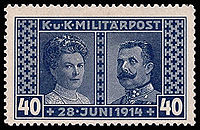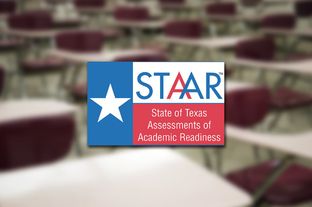It's a sad day when the presumptive republican presidential nominee gets blasted like this—truthfully, I might add—by a U.S. Congressman who is calling out his racism. This speaks volumes in unprecedented, historic proportion about the racial and racist dynamics that inform and underlie this election campaign. This connects to federal U.S. District Court Judge Gonzalo Curiel's investigation of Trump University and that because according to Trump he's "Mexican," he can't be fair. Very offensive, indeed.
I'm sensing from what I read that the Latino vote for the presidency is a particularly motivated one this time around such that the reaction to this racist arrogance by Trump should show up in the election booth. I certainly hope so.
-Angela
By Laura B. Martinez, Staff writer | Posted: Monday, June 6, 2016 11:15 am
U.S. Rep. Filemon Vela, D-Brownsville, has penned a letter
to Donald Trump calling the Republican presidential candidate a racist.
Vela also told Trump “you can take your border wall and shove it up your ass.”
The
congressman said he is tired of Trump’s rhetoric which he says has been
bad all along but, he said Trump took it to another level on the latest
racist attack on U.S. District Court Judge Gonzalo Curiel.
“I had to do it in language that only Donald Trump could understand,” Vela said about the tone of his letter.
The
congressman was referring to remarks that Trump referred to Curiel as a
Mexican although the judge is a U.S. citizen born in Indiana.
“I think it is very disgraceful. I couldn’t think any other way to respond than to fight fire with fire,” Vela said.
Vela said he is also standing up for the 55 million Hispanics living in the U.S.
“This
last week when I was home I run into constituents on the streets and
Trump’s rhetoric is making them really upset that they are looking for
someone to speak out for them,” Vela said.
Here is the full text of the letter:
June 6, 2016
Donald Trump
725 Fifth Avenue
New York, NY 10022
Dear Mr. Trump,
As
the United States Representative for the 34th Congressional District of
Texas, I do not disagree with everything you say. I agree that the
United States Government has largely failed our veterans, and those of
us who represent the people in Congress have the obligation to rectify
the Veterans Administration’s deficiencies. I also believe that the
Mexican government and our own State Department must be much more
aggressive in addressing cartel violence and corruption in Mexico,
especially in the Mexican border state of Tamaulipas. And clearly,
criminal felons who are here illegally should be immediately deported.
There might even be a few other things on which we can agree.
However,
your ignorant anti-immigrant opinions, your border wall rhetoric, and
your recent bigoted attack on an American jurist are just plain
despicable.
Your position with respect to the millions of
undocumented Mexican workers who now live in this country is hateful,
dehumanizing, and frankly shameful. The vast number of these individuals
work in hotels, restaurants, construction sites, and agricultural
fields across the United States. If I had to guess, your own business
enterprises either directly or indirectly employ more of these workers
than most other businesses in our country. Thousands of our businesses
would come to a grinding halt if we invoked a policy that would require
"mass deportation" as you and many of your supporters would suggest.
That is precisely why the Republican-leaning U.S. Chamber of Commerce
agrees that these workers deserve a national immigration policy that
would give them a pathway to citizenship.
While you would build
more and bigger walls on the U.S.-Mexico border, I would tear the
existing wall to pieces. No doubt Mexico has its problems, but it is
also our third-largest trading partner. U.S. Chamber of Commerce has
documented that this trade relationship is responsible for six million
jobs in the United States. In 2015, the U.S. imported $296 billion in
goods from Mexico while exporting $235 billion in products manufactured
in this country to Mexico. The Great Wall of China is historically
obsolete, and President Ronald Reagan famously declared, "Mr. Gorbachev,
tear down this wall … " while urging the Soviet Union to destroy the
barrier that divided West and East Berlin. Why any modern-thinking
person would ever believe that building a wall along the border of a
neighboring country, which is both our ally and one of our largest
trading partners, is frankly astounding and asinine.
I should also
point out that thousands of Americans of Mexican descent that you
mistakenly refer to as “Mexicans” have valiantly served the United
States in every conflict since the Civil War. While too numerous to
list, let me educate you about a few of these brave Medal of Honor
recipients:
Master Sergeant Jose Lopez, from my own hometown of
Brownsville, Texas, fought in World War II. Lopez was awarded the United
States’ highest military decoration for valor in combat - the Medal of
Honor - for his heroic actions during the Battle of the Bulge, in which
he single handedly repulsed a German infantry attack, killing at least
100 enemy troops. If you ever run into Kris Kristofferson, ask him about
Jose Lopez because as a young man Mr. Kristofferson recalls the 1945
parade honoring Sergeant Lopez as an event he will never forget.
In
1981, President Reagan presented Master Sergeant Roy Benavides with the
Medal of Honor for fighting in what has been described as “6 hours in
hell.” In Vietnam, Sergeant Benavides suffered 37 separate bullet,
bayonet and shrapnel wounds to his face, leg, head and stomach while
saving the lives of eight men. In fact, when awarding the honor to
Benavides, President Reagan, turned to the media and said, “if the story
of his heroism were a movie script, you would not believe it.”
You
have now descended to a new low in your racist attack of an American
jurist, U.S. District Court Judge Gonzalo Curiel, by calling him a
“Mexican” simply because he ruled against you in a case in which you are
being accused of fraud, among other accusations. Judge Curiel is one of
124 Americans of Hispanic descent who have served this country with
honor and distinction as federal district judges. In fact, the first
Hispanic American ever named to the federal bench in the United States,
Judge Reynaldo G. Garza, was also from Brownsville, Texas, and was
appointed by President John F. Kennedy in 1961.
Before you dismiss
me as just another “Mexican,” let me point out that my great-great
grandfather came to this country in 1857, well before your own
grandfather. His grandchildren (my grandfather and his brothers) all
served our country in World War I and World War II. His great-grandson,
my father, served in the U.S. Army and, coincidentally, was one of the
first “Mexican” federal judges ever appointed to the federal bench.
I
would like to end this letter in a more diplomatic fashion, but I think
that you, of all people, understand why I cannot. I will not presume to
speak on behalf of every American of Mexican descent, for every
undocumented worker born in Mexico who is contributing to our country
every day or, for that matter, every decent citizen in Mexico. But, I am
sure that many of these individuals would agree with me when I say:
‘Mr. Trump, you’re a racist and you can take your border wall and shove
it up your ass.’
Sincerely,
Filemon Vela
Member of Congress









